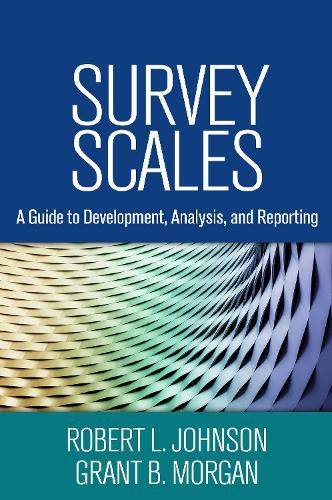Readings Newsletter
Become a Readings Member to make your shopping experience even easier.
Sign in or sign up for free!
You’re not far away from qualifying for FREE standard shipping within Australia
You’ve qualified for FREE standard shipping within Australia
The cart is loading…






Synthesizing the literature from the survey and measurement fields, this book explains how to develop closed-response survey scales that will accurately capture such constructs as attitudes, beliefs, or behaviors. It provides guidelines to help applied researchers or graduate students review existing scales for possible adoption or adaptation in a study; create their own conceptual framework for a scale; write checklists, true-false variations, and Likert-style items; design response scales; examine validity and reliability; conduct a factor analysis; and document the instrument development and its technical quality. Advice is given on constructing tables and graphs to report survey scale results. Concepts and procedures are illustrated with Not This/But This examples from multiple disciplines.
User-Friendly Features
*End-of-chapter exercises with sample solutions, plus annotated suggestions for further reading.
* Not This/But This examples of poorly written and strong survey items.
*Chapter-opening overviews and within-chapter summaries.
*Glossary of key concepts.
*Appendix with examples of parametric and nonparametric procedures for group comparisons.
$9.00 standard shipping within Australia
FREE standard shipping within Australia for orders over $100.00
Express & International shipping calculated at checkout
Synthesizing the literature from the survey and measurement fields, this book explains how to develop closed-response survey scales that will accurately capture such constructs as attitudes, beliefs, or behaviors. It provides guidelines to help applied researchers or graduate students review existing scales for possible adoption or adaptation in a study; create their own conceptual framework for a scale; write checklists, true-false variations, and Likert-style items; design response scales; examine validity and reliability; conduct a factor analysis; and document the instrument development and its technical quality. Advice is given on constructing tables and graphs to report survey scale results. Concepts and procedures are illustrated with Not This/But This examples from multiple disciplines.
User-Friendly Features
*End-of-chapter exercises with sample solutions, plus annotated suggestions for further reading.
* Not This/But This examples of poorly written and strong survey items.
*Chapter-opening overviews and within-chapter summaries.
*Glossary of key concepts.
*Appendix with examples of parametric and nonparametric procedures for group comparisons.